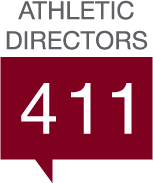The running theme in college athletics is change. In the past few years, we’ve seen an enormous number of policy changes, from NIL to revenue sharing to Title IX rules. And the theme is continuing, with recent policy changes shaping the playing field, both literally and figuratively. As an athletic director, staying informed about these developments is a high priority for the success of your program. So, let’s dive into what’s changing this time.
What’s Changing?
On February 12, 2025, the U.S. Department of Education rescinded a Biden-era memo that linked Name, Image and Likeness (NIL) payments to Title IX compliance. Previously, the guidance suggested that NIL payments provided by schools must be proportionally distributed between male and female athletes to align with gender equity laws under Title IX. The memo classified NIL payments as “athletic financial assistance,” akin to scholarships.
However, the Trump administration’s new interpretation advocates that Title IX does not extend to the distribution of NIL or revenue-sharing payments, arguing that such compensation is tied to market forces rather than institutional obligations. They argue that, enacted over 50 years ago, Title IX does not address how revenue-generating athletic programs should distribute compensation to student-athletes. This decision allows schools to allocate more resources to revenue-generating sports — primarily football and men’s basketball — without the same proportionality requirements.
Key Implications for Athletic Directors
Revenue distribution challenges
The rescission removes the expectation that NIL payments be evenly distributed across men’s and women’s sports. This could widen the financial gap between revenue-heavy programs like football and men’s basketball and non-revenue sports, many of which are women’s programs. Athletic directors must navigate how to allocate resources while balancing the needs of all teams.
Potential legal challenges
While the Department of Education’s decision provides clear guidelines for now, it may spark legal challenges. Female athletes or advocacy groups could argue that disproportionate NIL payments violate Title IX’s broader principles of gender equity. Athletic directors should prepare for potential lawsuits and increased scrutiny of their programs’ financial practices.
Impact on recruiting
The new NIL landscape could intensify the recruiting battle for exceptional athletes in revenue-generating sports, as schools with lucrative NIL opportunities gain a competitive edge. Conversely, non-revenue sports might struggle to attract talent without significant NIL deals. For ADs, it’s time to think creatively to support all athletes and maintain a balanced program.
Title IX compliance beyond NIL
While the keyword in college athletics has continuously been NIL, and the focus of recent policy changes is NIL, ADs cannot forget that Title IX compliance remains essential in other areas: scholarships, facilities, resources. Keep your programs equitable in these areas to avoid further complications.
Shifts in transgender athlete policies
In tandem with the NIL decision, the Trump administration issued an executive order banning transgender athletes from participating in women’s sports. The NCAA has already updated its policies to align with this order, which could lead to additional compliance considerations for athletic directors managing diverse teams.
How to Adapt
Audit Your programs
Regularly audit your athletic programs. While NIL deals no longer fall under Title IX, scholarships, facilities, resources and other areas do, so take extra care to make sure your program is compliant. Transparent reporting can also build trust with stakeholders.
Balance revenue and equity
While revenue-sharing opportunities can bolster key programs, remember the broader mission of collegiate athletics. Explore ways to support non-revenue sports through creative funding models, such as enhanced fundraising efforts or community partnerships.
Stay informed and engaged
Policy changes of this magnitude will garner serious pushback, so keep an eye on potential legal developments and changes in federal, NCAA or NAIA policies. Join and engage with peer networks or industry associations to share best practices and stay ahead of the curve.
Foster open communication
“Honesty is the best policy.” Transparency and honesty go a long way; communicate clearly with athletes, coaches and staff about how decisions are being made and what they mean for their programs.
Closing Thoughts
It’s a tumultuous time in college athletics, and two things can be said with certainty: more changes will come, and so will pushback. As an athletic director, the challenge lies in working through these shifts with fairness, foresight and a commitment to all of your student-athletes’ success. You may not have a say in the higher decisions being made, but you do have a say in the culture and environment of your department. Stay flexible, equitable and proactive as college athletics continue to transform.




